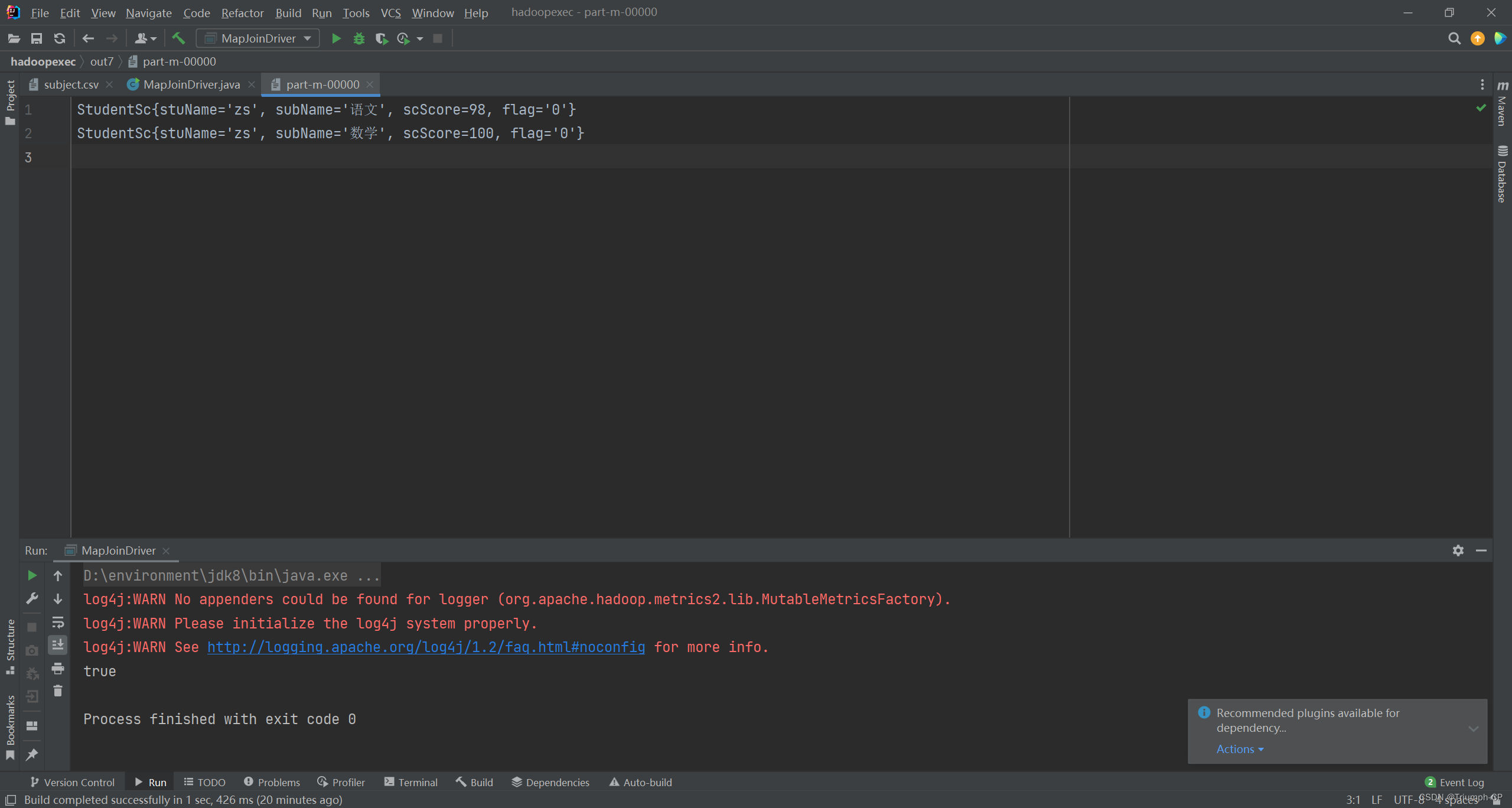Python pass 语句
Python pass 是空语句,是为了保持程序结构的完整性。
pass 不做任何事情,一般用做占位语句。
Python 语言 pass 语句语法格式如下:
pass
测试实例:
#!/usr/bin/python
# -*- coding: UTF-8 -*-
# 输出 Python 的每个字母
for letter in 'Python':
if letter == 'h':
pass
print '这是 pass 块'
print '当前字母 :', letter
print "Good bye!"
以上实例执行结果:
当前字母 : P
当前字母 : y
当前字母 : t
这是 pass 块
当前字母 : h
当前字母 : o
当前字母 : n
Good bye!
Python Number(数字)
Python Number 数据类型用于存储数值。
数据类型是不允许改变的,这就意味着如果改变 Number 数据类型的值,将重新分配内存空间。
以下实例在变量赋值时 Number 对象将被创建:
var1 = 1
var2 = 10
您也可以使用del语句删除一些 Number 对象引用。
del语句的语法是:
del var1[,var2[,var3[....,varN]]]]
您可以通过使用del语句删除单个或多个对象,例如:
del var
del var_a, var_b
Python 支持四种不同的数值类型:
1、整型(Int) - 通常被称为是整型或整数,是正或负整数,不带小数点。
2、长整型(long integers) - 无限大小的整数,整数最后是一个大写或小写的L。
3、浮点型(floating point real values) - 浮点型由整数部分与小数部分组成,浮点型也可以使用科学计数法表示(2.5e2 = 2.5 x 102 = 250)
4、复数(complex numbers) - 复数由实数部分和虚数部分构成,可以用a + bj,或者complex(a,b)表示, 复数的实部a和虚部b都是浮点型。
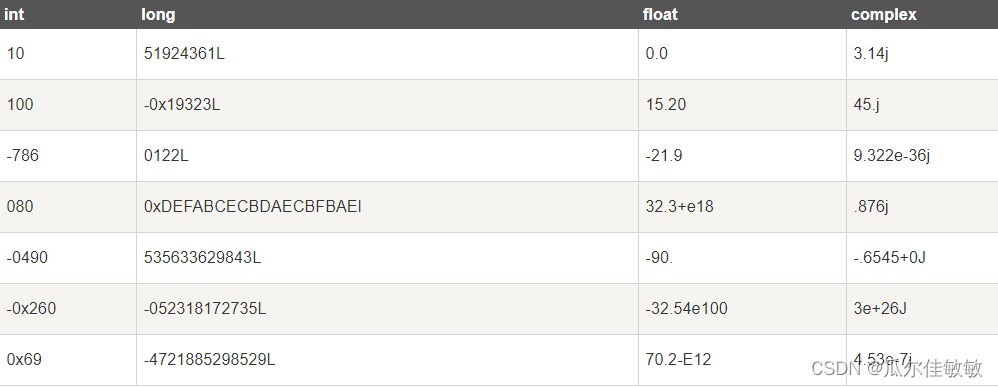
长整型也可以使用小写"L",但是还是建议您使用大写"L",避免与数字"1"混淆。Python使用"L"来显示长整型。
Python还支持复数,复数由实数部分和虚数部分构成,可以用a + bj,或者complex(a,b)表示, 复数的实部a和虚部b都是浮点型
Python Number 类型转换
int(x [,base ]) 将x转换为一个整数
long(x [,base ]) 将x转换为一个长整数
float(x ) 将x转换到一个浮点数
complex(real [,imag ]) 创建一个复数
str(x ) 将对象 x 转换为字符串
repr(x ) 将对象 x 转换为表达式字符串
eval(str ) 用来计算在字符串中的有效Python表达式,并返回一个对象
tuple(s ) 将序列 s 转换为一个元组
list(s ) 将序列 s 转换为一个列表
chr(x ) 将一个整数转换为一个字符
unichr(x ) 将一个整数转换为Unicode字符
ord(x ) 将一个字符转换为它的整数值
hex(x ) 将一个整数转换为一个十六进制字符串
oct(x ) 将一个整数转换为一个八进制字符串
Python math 模块、cmath 模块
Python 中数学运算常用的函数基本都在 math 模块、cmath 模块中。
Python math 模块提供了许多对浮点数的数学运算函数。
Python cmath 模块包含了一些用于复数运算的函数。
cmath 模块的函数跟 math 模块函数基本一致,区别是 cmath 模块运算的是复数,math 模块运算的是数学运算。
要使用 math 或 cmath 函数必须先导入:
import math
查看 math 查看包中的内容:
>>> import math
>>> dir(math)
['__doc__', '__file__', '__loader__', '__name__', '__package__', '__spec__', 'acos', 'acosh', 'asin', 'asinh', 'atan', 'atan2', 'atanh', 'ceil', 'copysign', 'cos', 'cosh', 'degrees', 'e', 'erf', 'erfc', 'exp', 'expm1', 'fabs', 'factorial', 'floor', 'fmod', 'frexp', 'fsum', 'gamma', 'gcd', 'hypot', 'inf', 'isclose', 'isfinite', 'isinf', 'isnan', 'ldexp', 'lgamma', 'log', 'log10', 'log1p', 'log2', 'modf', 'nan', 'pi', 'pow', 'radians', 'sin', 'sinh', 'sqrt', 'tan', 'tanh', 'tau', 'trunc']
>>>
下文会介绍各个函数的具体应用。
查看 cmath 查看包中的内容
>>> import cmath
>>> dir(cmath)
['__doc__', '__file__', '__loader__', '__name__', '__package__', '__spec__', 'acos', 'acosh', 'asin', 'asinh', 'atan', 'atanh', 'cos', 'cosh', 'e', 'exp', 'inf', 'infj', 'isclose', 'isfinite', 'isinf', 'isnan', 'log', 'log10', 'nan', 'nanj', 'phase', 'pi', 'polar', 'rect', 'sin', 'sinh', 'sqrt', 'tan', 'tanh', 'tau']
>>>
实例
>>> import cmath
>>> cmath.sqrt(-1)
1j
>>> cmath.sqrt(9)
(3+0j)
>>> cmath.sin(1)
(0.8414709848078965+0j)
>>> cmath.log10(100)
(2+0j)
>>>
Python数学函数
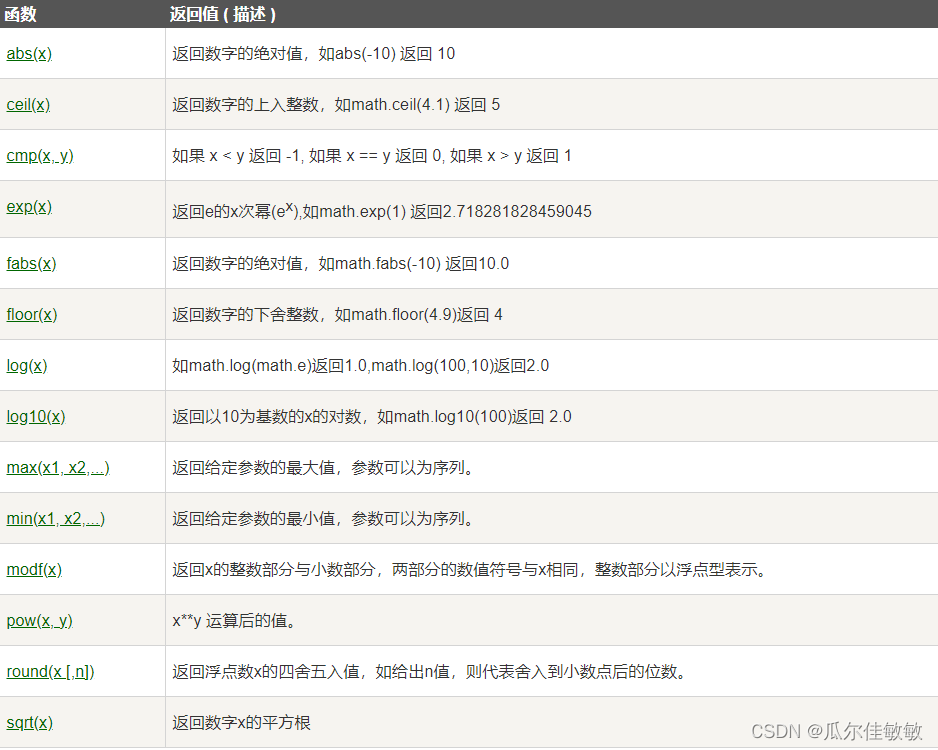
Python随机数函数
随机数可以用于数学,游戏,安全等领域中,还经常被嵌入到算法中,用以提高算法效率,并提高程序的安全性。
Python包含以下常用随机数函数:

Python三角函数
Python包括以下三角函数:
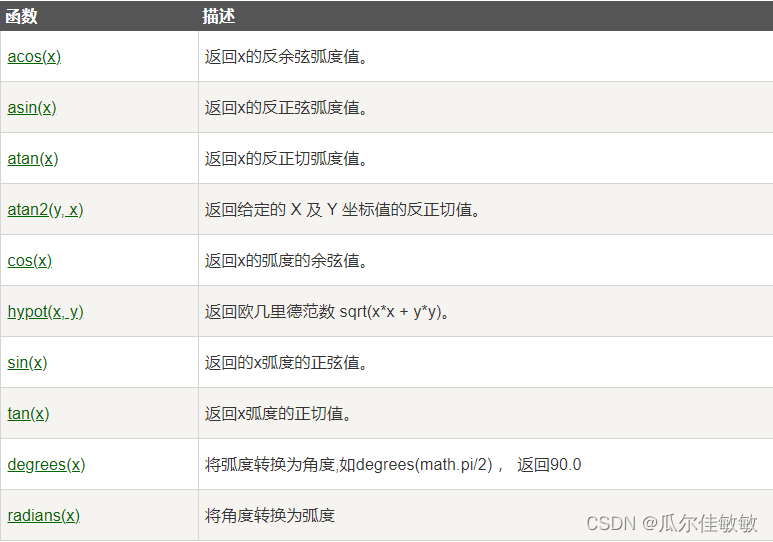
Python数学常量

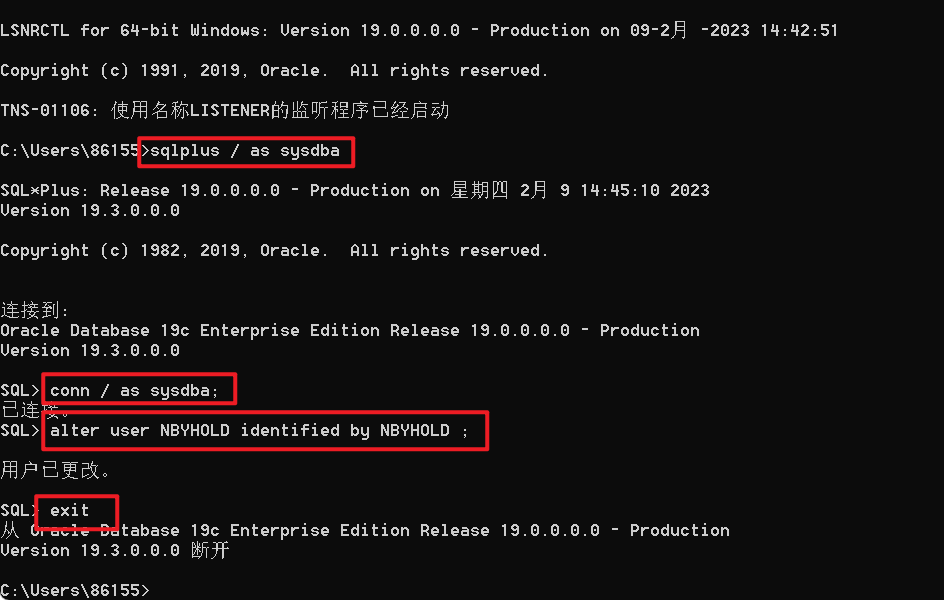

![[C++] -- 模板初阶](https://img-blog.csdnimg.cn/5d12957543be4310aff56dadcceb9d6f.png)










